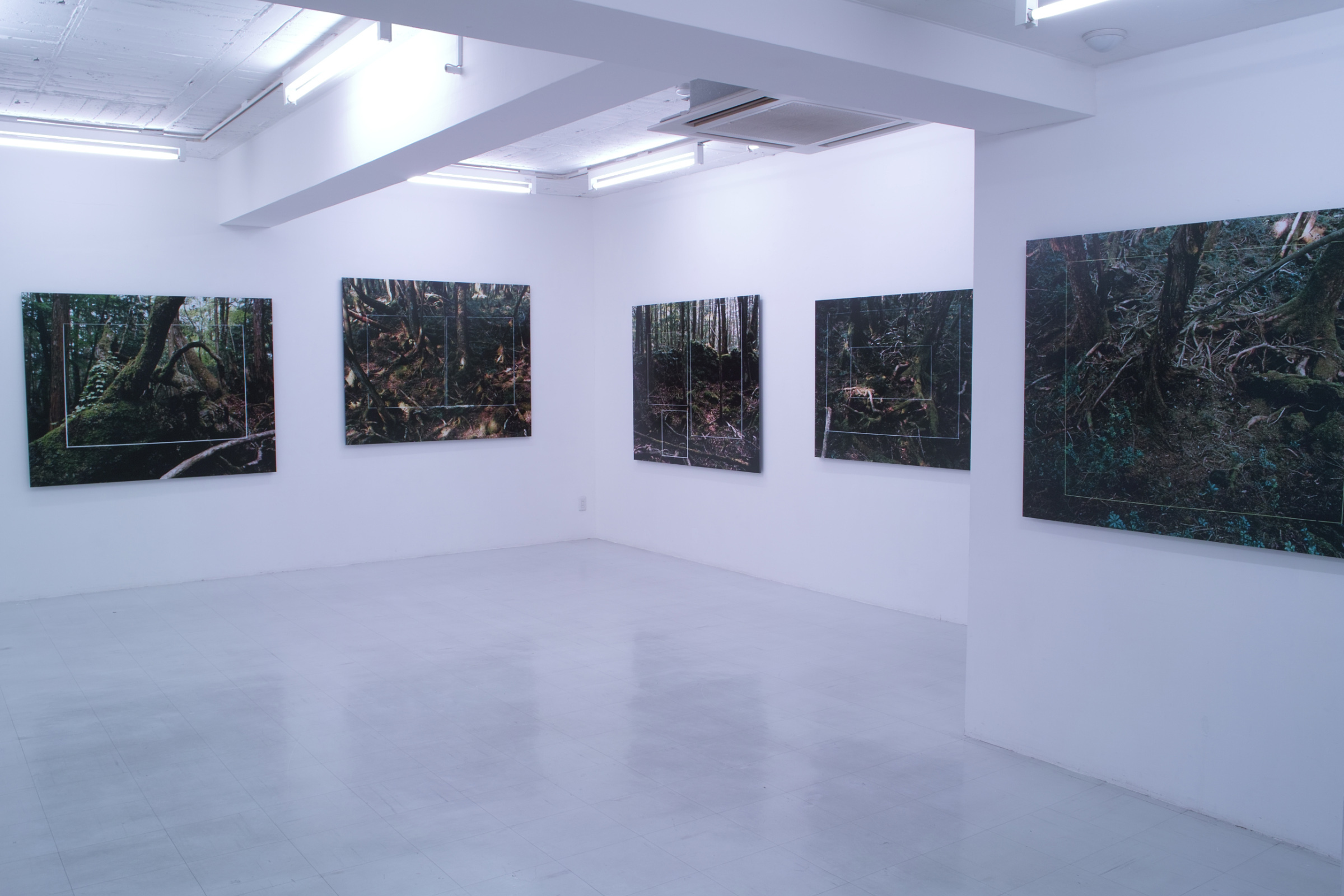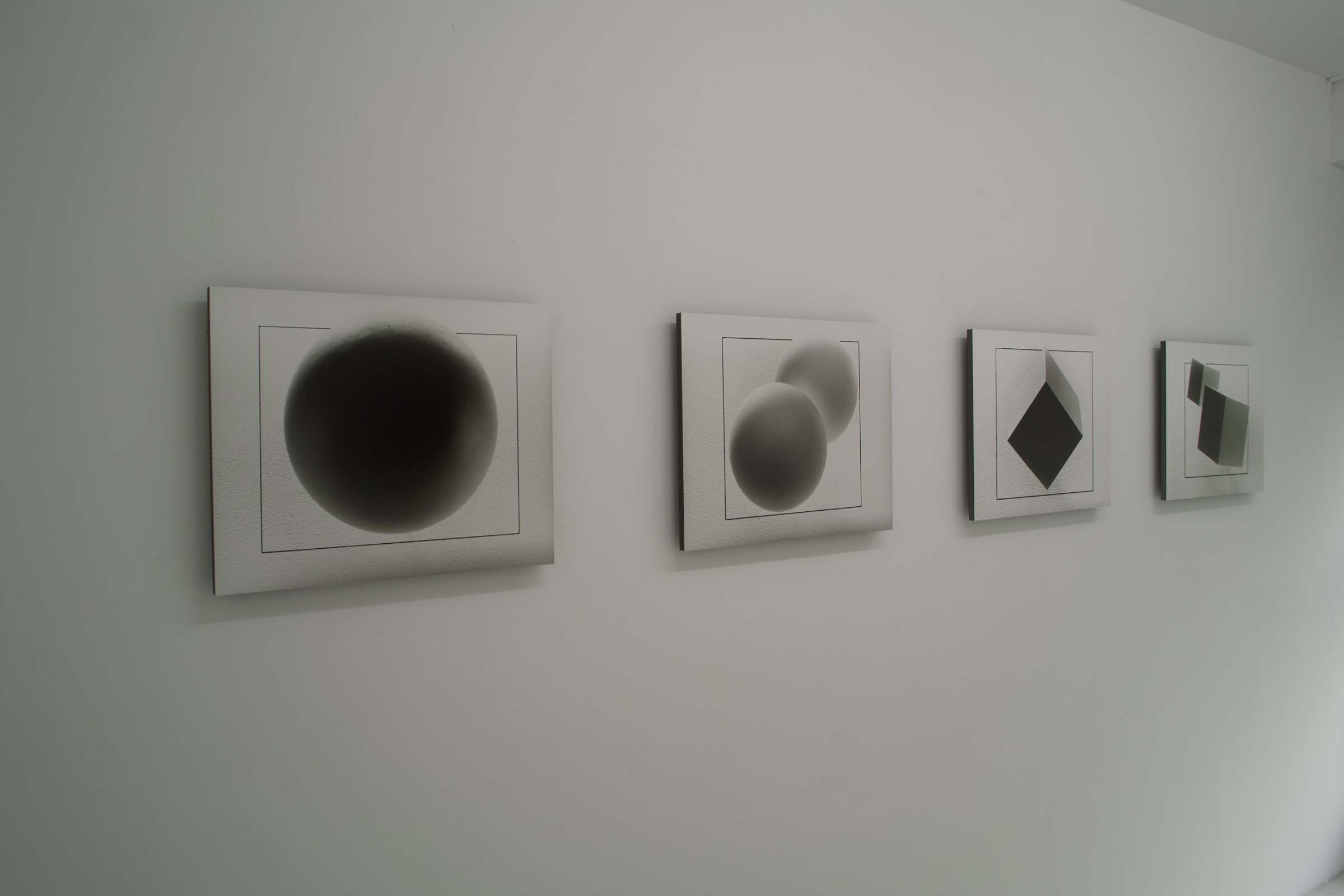Tokyo
Taku Aramasa frame & vision - blessing in forest-
2009/5/7–5/30
ARAMASA Taku Solo Exhibition "frame & vision - blessing in forest -"
2009.5.7(thu) - 5.30(sat)
ARAMASA Taku Solo Exhibition "frame & vision - blessing in forest -"
2009.5.7(Thu) - 5.30(Sat)
In this exhibition, ARAMASA presents works with an experimental structure that investigate human vision and the two-dimensional aspect of photography - a contrast to his previous work, with its strong documentary character. At first glance, his "Frame and Vision: blessing in forest" series, photographed in the vast Fuji woodlands, seems to have had a square white frame appended to it, but a closer inspection reveals that the white line of this frame actually passes through the back of some of the trees. Tracing the white line more carefully, you realize that the massive installation (a sort of "trick" frame) that stands in this deep forest has been created by stretching a length of white rubber cord around the inside of these woods to trace out a three-dimensional trapezoid.
-- About the works --
In this work, ARAMASA focuses on the particular characteristics of human vision and the photographic mechanism that transforms the three - dimensional world into a flat image. The retina that receives light rays from objects is a flat surface, and the visual information that human beings actually obtain from this is no more than a two - dimensional reflection of the world. The world as we see it, however, consists of the three-dimensional forms of objects and their positional relations as calculated and processed by the brain, based on the two-dimensional image projected onto the retina. In short, our vision and what we see is dependent on impressions and notions received from past experiences.
A photograph can be said to be a four-sided, framed cutout of three-dimensional reality. This "cutting out" is an extremely physical act that gives one a form of direct feedback or contact with the real world. The act of taking a photograph, too, cannot escape certain notions that have been formed by past habit or experience. In an effort to confront us with this question, ARAMASA places a white frame on the inside of the real-world subject of his photographs in order to draw stronger attention to the notional character of two-dimensionality and its construction. While the surface image of the frame in the photograph appears to be square, the actual frame itself is not; it exists only at the level of the real world. ARAMASA's act of expressing this phenomenon is an attempt to bring to light the essential falsehood of photography. Using these experimental approaches, ARAMASA raises questions about the abstract nature of both the acts of looking at objects and taking photographs of them.
-- About ARAMASA Taku --
ARAMASA Taku was born in 1936 in Toshima Ward, Tokyo. In 1940, his grandfather moved to take up an appointment in Manchuria, where ARAMASA spent most of his childhood. After Japan lost the war, his family spent a period of time as refugees before returning alive to Japan in the autumn of 1947. In 1979, ARAMASA was reunited with his foster mother, who had been separated from him and living in a refugee camp in Suihua City in Heilongjiang Province, China since the end of the war. This meeting became an opportunity for him to learn more about the lives of the Japanese orphans and other survivors who had stayed behind in China and were still living there. Since then, ARAMASA has exhibited several series of documentary work featuring portraits of Japanese orphans left behind in China, such as "Who Am I" and "Twin Families"(1990). In addition, he also started an investigative photography project in the Far East directly after the collapse of the former Soviet Union, publishing a series of three books: "Land of Silence: Siberia" (1995), a hunt for what remains of the Japanese army concentration camps that lie spread out over the entire expanse of the former USSR; "Land of Promises: America" (2000), which revisited the traces of Japanese immigrant labor camps in the US; and "Distant Motherland" (1985), a series of portraits of first-generation immigrants to South America.
Recent publication : "ARAMASA Taku Photographs|Apocalypse" (2006)

